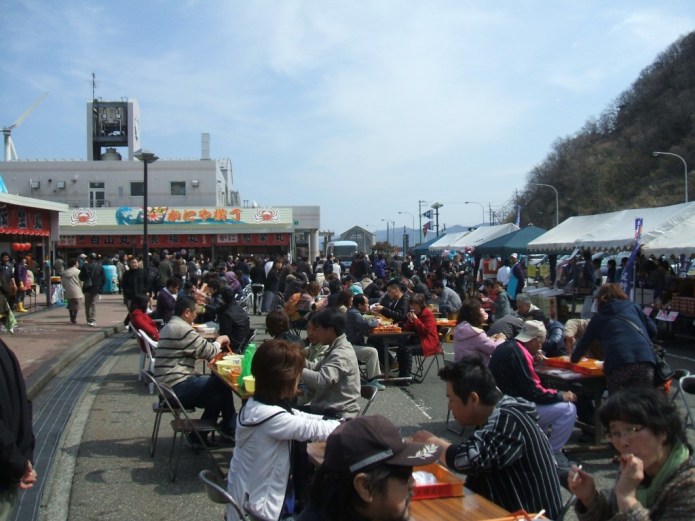Good morning from the Itoigawa Global Geopark!
If you were given only one word to describe Itoigawa’s winter, what would it be? For me, there is only one:
Monkfish.
The winters here along the Sea of Japan are harsh. Cold, blustery weather, meters upon meters of snow, it’s enough to make holing up indoors for three months look like a sound life decision. And yet last Sunday, hundreds of people gathered in downtown Itoigawa in the freezing rain. Why? One word:
Monkfish.
Let’s get this out of the way: Monkfish are ugly. They are large, fat, misshapen blobs that are almost entirely mouth. Large members of the anglerfish family, they are so fat they actually have almost no ability to swim. But every bit as hideous as they are, monkfish are delicious. Monkfish flesh is also soft. It is so soft. When prepared in soup or stew, it seems to just melt on the tongue like butter.
One of the main features of the Itoigawa Global Geopark is its extreme variance in elevation. From 0m at the coast to 2,766m at the peak of Mt. Korenge, the mountains of Itoigawa seem to fall directly into the sea. And this is because they do! The seabed drops sharply off the coast of Itoigawa, and this deep seabed rich in marine life provides a perfect habitat for the monkfish. This is why Itoigawa has become one of the best places to enjoy this rare delicacy.
This past Sunday, over a thousand people lined up in the cold and the rain to take part in the 2014 Itoigawa Monkfish Festival, held every January in front of Itoigawa Station. Most people attend the festival for the monkfish soup, which is sold for the incredibly low price of only 500 yen per bowl, but the festival also features a tsuruishigiri demonstration.
 Tsurushigiri is a traditional method of cleaning and slicing a monkfish while it is hanging from a hook. It is easiest to clean this way due to its immense size, but it also used to act as a sort of spectacle to draw customers to fisherman’s stalls and shops. At the Itoigawa Monkfish Festival, you can take in this traditional performance, provided you have the stomach for it!
Tsurushigiri is a traditional method of cleaning and slicing a monkfish while it is hanging from a hook. It is easiest to clean this way due to its immense size, but it also used to act as a sort of spectacle to draw customers to fisherman’s stalls and shops. At the Itoigawa Monkfish Festival, you can take in this traditional performance, provided you have the stomach for it!
Even if seeing a massive ugly fish being gutted and sliced isn’t really your thing, the monkfish festival has a lot to offer anyone who just enjoys seafood. A number of vendors arrive to sell locally caught fish and produce, both fresh and prepared in a variety of ways.
If you are interested in visiting the Itoigawa Monkfish Festival this year, you haven’t missed the boat! While the Itoigawa Event finished last Sunday, it will be held again at Oyashirazu Pier Park on February 2nd and Marine Dream Nou on February 9th! While both of these locations have ample parking, they are popular tourist destinations and so parking can be limited. Be sure to arrive early if traveling by car!
Also, monkfish soup is limited, so arrive as early as you can if you want to guarantee yourself a bowl!
Hope to see you there!
–Ishikoro
2014 Itoigawa Monkfish Festival – Oumi Location
2/2 (Sun) 10:00~14:00 Oyashirazu Pier Park (Limit 500 bowls)
15 min. walk from Oyashirazu Station
Map
2014 Itoigawa Monkfish Festival – Nou Location
2/9 (Sun) 10:00~14:00 Marine Dream Nou (Limit 1000 bowls)
1 hr. walk from Nou Station
Map
















